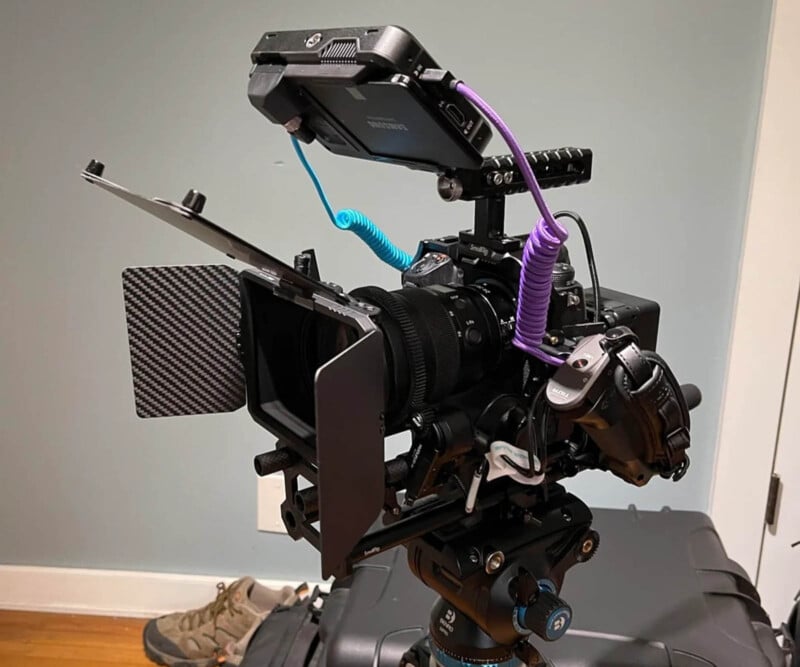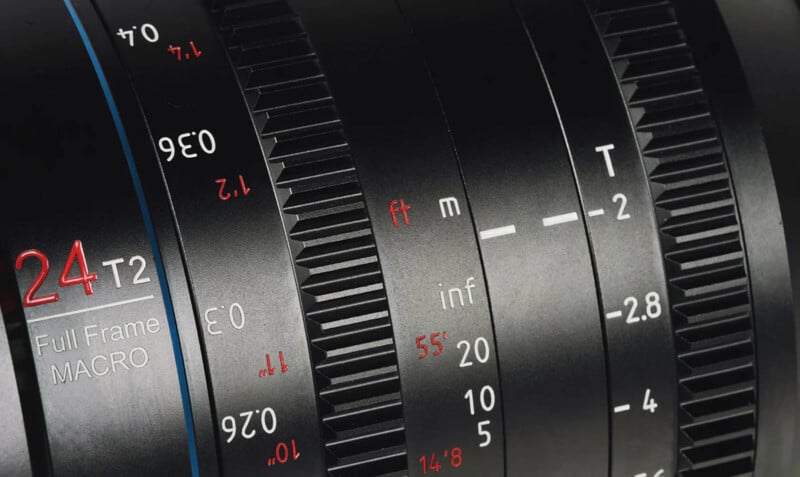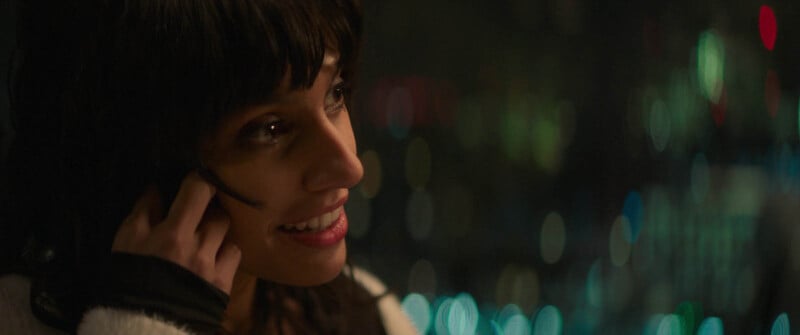
If you, like me, are prone to idly perusing the catalogs of your favorite camera store searching for the next bit of kit to add to your collection, you’ve probably stumbled into the “Professional Video” section and been absolutely bowled over by how much money one can spend on literally anything in this category.
In the still photography field, the most cutting-edge flagship mirrorless camera tops out at around the $6,000 mark. Don’t get me wrong, that’s a lot of money, enough to put such equipment out of reach for all but the most passionate or affluent of enthusiasts, or working professionals who stand to expand their capabilities, and therefore make more money, from the purchase. Aside from some flavor of storage media and a lens to go with it, that $6,000 is really all you need to spend to end up with a fully functional top-of-the-line setup that is only limited by the skill of the user.

Not so in video land. Take the entry-level Sony FX3, the smallest full-frame Sony body designed specifically for professional video use. Its list price at the time of writing is $3,899. Not too bad, right? Ah, but now we get into the exciting world of peripheral video gear. There are as many ways to rig out a video camera as there are uses for one, but I can say from personal experience that the costs add up very quickly. Building out a small video or hybrid camera for professional video can easily cost as much as the camera body, between a camera cage, an external monitor, an external shotgun and/or lavalier microphone system, a follow focus (a motor and control that allows the focus to be adjusted without physically handling the lens) and/or remote trigger, a large V- or Gold-mount battery to run everything off of, power and video cabling, and a rail system to hold everything together.
And we haven’t even begun to discuss the lenses. Hopefully, if you’re reading this, you understand that lenses are kind of important, but you, like me when I was first exploring the video world, might not fully understand what sets a cinema-focused lens apart from the 24-70mm f/2.8 sitting in your backpack or have mounted to your camera right now, and certainly not what justifies such a significantly higher price tag when compared to a photography lens of a comparable focal length and aperture. For instance, the Canon CN-E 50mm T1.3 cinema lens goes for almost $4,000, while the EF-mount 50mm f/1.4 is just about a tenth of that price brand-new. So, what gives?
Rings of Fire

The first things you’ll probably notice that set a cinema-focused lens apart from its still counterparts are probably related to the exterior housing and the overall construction. Most lenses of this type will have focus distances pre-marked on their focus ring, which are mirrored on the opposite side so they can be read from either side of the camera. The ring will also be molded with gear teeth for use with a follow focus motor — the standard dimension is .8 MOD, or 32 pitch, which means any motor or ring of this specification will be intercompatible. You will probably also find this gearing on the aperture ring, as well.
In addition, and incredibly important for ease of use with a follow focus, the focus and aperture rings itself will have hard end-stops, where it’s commonplace for still lenses to have an infinite focus and aperture throw due to the needs of the autofocus systems and the more modern focus and aperture control systems, which are electronic rather than involve a physical connection to the moving components. This is huge because it eliminates the need for repeated, fiddly manual calibration every time you alter your setup. The aperture ring will also be “clickless”, as well, allowing a camera operator or assistant camera operator to smoothly adjust exposure on the fly if a shot’s lighting changes.
You may have also noticed that the markings on the aperture ring aren’t quite what you’re used to seeing on a standard stills lens. Rather than being denoted by the physical size of the aperture, expressed as a ratio of the lens’s focal length to the diameter of the opening through which light travels-an F-stop, a cinema lens will have its aperture rated by the amount of light the lens is able to gather and transmit to the sensor at a given aperture-a T-stop. The reason for this is simple-in the video and cinema world, it’s almost always more useful for a camera operator or director of photography to know the actual numerical exposure they’re going to get from a shot than it is for them to know a theoretical, nebulous value like the F-stop. With most productions involving a number of different shots from different angles and lighting situations and the cost of adjusting exposure in post, this translates to both saved time and saved money at every step of the process. An interesting quirk of this system is that two lenses with the same maximum aperture, say, f/1.4, might have very different maximum T-numbers.
Mount Up
Moving to the back of the back of the lens, you might see something you’ve never seen before. Most lens mounts you’ve likely encountered, whether that’s F, EF, L, M43, Z, RF, E, or any of the more esoteric options out there, tend to involve some arrangement of spring-loaded locking lugs and pins that are designed to click into place when met with a compatible mating ring on the camera body. Press a button on the body to release the locking pins, and twist off to remove them. In the professional video world, lenses that use these mounts absolutely exist, especially now that mirrorless cameras have truly opened the door to the possibility of professional-grade video from a small, compact camera.

For the seriously heavy-duty video work, though, the PL, or Positive Lock, mount has reigned supreme for just about 4 decades. Developed by cinema camera manufacturer Arri, this mount, rather than relying on springs that might not hold up to the big, heavy chunks of glass used by cinema cameras, uses 4 large tabs on the lens that mate to as many cutouts on the camera, and are then captured by rotating a locking lever. The PL mount is rugged, simple, reliable, and designed in such a way that makes it adaptable to many other standards-you can buy relatively inexpensive (for video equipment, anyway) adapters from Wooden Camera, Metabones, and other manufacturers that will let you mount a PL lens on just about any DSLR or mirrorless camera you’d want to use one with.
Even more recently, the LPL, or Large Positive Lock, mount has been introduced. Also developed by Arri, it uses a similar mechanism to the previous PL mount but has been designed to better cope with the varying use cases and unique challenges present when working with high-performance digital sensors and lenses. It’s physically larger and has a shorter flange distance (the distance between the back of the mount to the image sensor), which aids in eliminating optical artifacts from both the lens and the environment it’s used in. This particular mount is really only seen in lenses from Arri, Leitz, and other ultra-premium manufacturers given its intended use case on cameras that cost as much as a house, though it’s beginning to trickle out to more budget offerings, as well.
If that weren’t enough, many dedicated cinema lenses are explicitly designed to have their mounts changed on the fly. Just a couple of screws, and your EF is now a PL. Neat, huh?
More Than Meets The Eye
Internally, a cinema lens is very different from a stills lens. The most obvious difference in practice is that a cinema lens will almost never offer autofocus, for a variety of reasons. These lenses are already typically quite large and heavy and are designed to be taken apart and serviced as easily as possible given their inherent complexity. Autofocus systems also require either an interface with the camera itself that can understand and use the signaling protocols the lens is designed for, or an entire external system that works using a sensor and follow focus, like DJI’s recent LiDAR focus-assist tools. All of these things together mean that it’s simply not practical in most cases to implement an autofocus system in a lens that’s designed to be heavily used on multiple camera systems, or in a camera that is designed to use a number of different lenses. More recent offerings from RED Digital Cinema, Canon Cinema EOS, and Blackmagic Design do offer limited autofocus functionality with certain lenses, but this is very much an exception rather than the rule.
Related to this, many cinema zoom lenses will be parfocal, meaning that the focus point is maintained throughout the zoom range allowing for dramatic crash zooms and other effects. This is rather uncommon in a photography lens since it’s not typically that valuable of a feature given the nature of the medium.
![]()
The aperture mechanism also gets an upgrade. It’s generally accepted that the “goal” for an aperture is to be as perfectly circular as possible at any given size to generate smooth, symmetrical bokeh at every point in the image. Still lenses might have 6 or 7 aperture blades, or up to 11 in some of the higher-end professional primes like the Z-mount 85mm f/1.2, but it’s common for a cinema lens to have at least 11, with many having 12, 16, or even more, all in the pursuit of rounding out the aperture.

Lastly, and most novel among all of the internal differences, are the lenses designed to be “anamorphic”. This means that the lens, rather than trying to project a true-to-life image onto the camera sensor, actually squeezes the image, usually in the horizontal dimension. When “desqueezed” in-camera or in post, this results in a very wide field of view compared to a standard spherical lens at the same focal length, along with the signature lens flare popularized by the likes of J.J. Abrams, especially in science-fiction and action films. Because of the “desqueezing” required to get an undistorted image and the construction of the elements within, images shot on this type of lens also exhibit telltale bokeh characteristics, with elongated, elliptical bokeh balls. And, because of their unique optical properties, anamorphic lenses will actually change their field of view with a change in focus distance, creating a strange “vertigo”-like effect when quite pronounced.
Anamorphic still lenses are vanishingly rare, but this type of lens produces an image that lots of people really enjoy, myself included.
All The Small Things
Of course, there are far too many tiny changes to go over here. Everything, from the lens element coatings to the placement of markings on the lens itself to the optical formula, is tweaked to serve the needs of the video and cinema world. It’s absolutely a rabbit hole, but if you’re like me and you live for this kind of thing, it’s absolutely fascinating to read all of the literature from Arri and Zeiss and other manufacturers that explains just how they do what they do.
The really good news is that, as I mentioned earlier, the widespread adoption of the hybrid mirrorless camera has ushered in a tidal wave of smaller manufacturers that are making this kind of equipment accessible to the relative layperson. Sirui, for example, produces a whole lineup of budget-oriented anamorphic prime lenses in a variety of mounts that make it possible to dip your toe in this ocean without needing to spend literally an entire year’s salary on something like a Cooke Anamorphic/i. And, of course, standard photography lenses are now so good and so versatile that for most people they’re more than capable of shooting excellent video.
The most important thing is to be an educated consumer, both because it makes it easier to figure out what you’re buying and because it allows you to make what you want to make faster than you might otherwise. I hope I’ve helped contribute to that for you.
